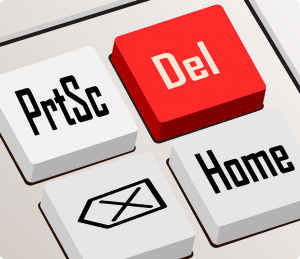How to Fix Common Quickbooks Errors Using the QBInstall Tool
 There’s a reason why Quickbooks remains the world’s leading accounting software for small-to-mid sized businesses: it’s user friendly, loaded with features, and backed by Intuit’s first-class support. But like all software, even Quickbooks is susceptible to various errors, some of which occur during the installation phase. If you’ve encountered an error when attempting to install the Quickbooks accounting software, you should try using the QBInstall Tool to fix it.
There’s a reason why Quickbooks remains the world’s leading accounting software for small-to-mid sized businesses: it’s user friendly, loaded with features, and backed by Intuit’s first-class support. But like all software, even Quickbooks is susceptible to various errors, some of which occur during the installation phase. If you’ve encountered an error when attempting to install the Quickbooks accounting software, you should try using the QBInstall Tool to fix it.
Before we start, it’s important to note that QBInstall isn’t going to fix all installation problems. The tool can be used to diagnose and fix a variety of installation errors, but it’s not a magic fix. According to Intuit’s official website, the QBInstall Tool can fix 1603 errors, 1935 errors, 1904 errors, 1402 errors, errors associated with damaged Microsoft .NEW Framework, and errors associated with damaged MSXML and C++. If you’ve encountered a different type of error, you may have to seek an alternative solution.
The first step to fixing the aforementioned installation errors is to download the Quickbooks Install Tool to your desktop. Don’t worry, the tool is completely free and can be found at http-download.intuit.com/http.intuit/Downloads/Tools/QuickBooksInstallDiagnosticTool.exe. Simply follow the link and download the tool to your computer’s desktop.
Once downloaded, double-click the exe file to begin the installation. Next, run the program to locate your installation files. In the event that you cannot see or find your Quickbooks installation files, you’ll need to run the installer again to populate the files in the temp folder. The QBInstall Tool will then use these files for its repairs.
Depending on the problem, you may see the QBInstall Tool return one of several different messages. If the tool says “No Error Details Found,” then it did not detect any errors associated with your Quickbooks installation. If it says “Error Detected,” then it detected at least one error associated with the installation. Assuming the latter is revealed, it will give you the option to fix the error by clicking “Proceed.” Simply follow the on-screen instructions and the QBInstall Tool should be able to fix the problem. Again, there’s no guarantee that it will work, but this tool can fix a variety of common errors and problems experienced during the software’s installation.
Did this tutorial work for you? Let us know in the comments section below!
Tips on Choosing an Accountant for Your Small Business
 Keeping track of income, business-related expenses and other financial details can be a daunting task to say the least. But the good news is that you don’t have to do this yourself. By outsourcing it to a professional accountant, you can focus your attention on other aspects of running and growing your business. So, here are some essential tips on how to choose an accountant for your small business.
Keeping track of income, business-related expenses and other financial details can be a daunting task to say the least. But the good news is that you don’t have to do this yourself. By outsourcing it to a professional accountant, you can focus your attention on other aspects of running and growing your business. So, here are some essential tips on how to choose an accountant for your small business.
Go Local
While there’s no rule stating that you must use a local accountant, doing so will give you peace of mind knowing that he or she can be easily reached. Furthermore, speaking with your accountant in person instills greater trust and confidence. Instead of hiring an accountant who lives across the country — or in a different country altogether — choose one that’s located within a reasonable distance from your business.
Certification
When comparing prospective accountants for your business, check to see what certifications they have. Depending on the state, some accountants may hold certifications from the Certified Public Accountants or Chartered Accountants. Chartered Accountants (CAs). Obtaining certifications such as these requires extensive training and education; therefore, you can rest assured knowing the accountant is knowledgeable in the trade.
Industry Experience
Of course, it’s always a good idea to choose a professional accountant who is experienced in your respective industry or trade. If you operate a retail store, for instance, you should hire an accountant who has performed services for other retailers.
Availability
You should also choose an accountant who is readily available. When you have a question about your finances, you’ll want to know that your accountant can be easily reached. If he or she has a tendency to not return your calls, it could reflect negatively on your business.
Testimonials and Reviews
Last but not least, do some research to see what past customers have said about prospective accountants. A simple Google search of the accountant’s name will likely reveal customer reviews. Were customers satisfied with the accountant’s services? Were there any complaints? How were these complaints handled? A single negative review shouldn’t prevent you from hiring an accountant, but if the bulk of his or her customers were not satisfied, you may want to consider a different accountant for your business.
Quickbooks: How to Change an Opening Balance
 Looking to change the opening balance on one or more of your bank accounts in Quickbooks? Everyone is bound to make a mistake when entering account balances at some point in time. If you happen to enter the wrong balance, or if you did not enter an opening balance, you can correct the problem by performing just a few simple steps. For step-by-step instructions on how to change an opening balance in Quickbooks, keep reading.
Looking to change the opening balance on one or more of your bank accounts in Quickbooks? Everyone is bound to make a mistake when entering account balances at some point in time. If you happen to enter the wrong balance, or if you did not enter an opening balance, you can correct the problem by performing just a few simple steps. For step-by-step instructions on how to change an opening balance in Quickbooks, keep reading.
What is the Opening Balance?
The opening balance is essentially the very first entry on the bank register. By default, this entry is marked as “Reconciled.” It’s important to note that the opening balance entry must be deleted if you plan on entering historical transactions.
How to Fix Incorrect Opening Balance
To begin, go ahead and fire up your Quickbooks accounting software. Once the software has loaded, click the gear icon at the main navigation menu, followed by Chart of Accounts. This should bring up a list of all accounts associated with your Quickbooks software. Now, scroll through this list and choose the account on which the incorrect opening balance was made. Next, click Report, then change the transaction date to “All Dates.” Once complete, click “Run Report.”
With the report in hand, search for the Deposit posted with a Memo/Description of the Opening Balance. Click on the entry to open the balance, which should take you to the Bank Deposit. From here, you can change the amount of the opening balance. Double-check it to ensure that it is correct and click “Save” to complete the process. Sorry if you were expecting more, but that’s all it takes to fix an incorrect opening balance in Quickbooks.
Of course, changing the opening balance shouldn’t be confused with reconciling your account. Reconciling is done to identify (and fix) errors. It is performed by first running a Reconciliation Discrepancy report, at which point the report should reveal the error. You may then click “Restart Reconciliation” to fix the error. But if you think the error was caused by a previous reconciliation, you may want to undo the changes, in which case you should click the “Undo Last Reconciliation” button.
Did this tutorial work for you? Let us know in the comments section below!
How to Transfer Company File to a New Computer
 Looking to transfer your Quickbooks company file to a new computer? Like most electronic devices, a computer will eventually become obsolete due to the vast, ever-changing landscape of hardware and software. So even if Quickbooks runs flawlessly on your computer now, it may not a year or two later down the road. You can overcome these technical constraints, however, by upgrading to a new computer. But whenever you upgrade to a new computer, you’ll need to transfer your Quickbooks company file to pick up where you left off.
Looking to transfer your Quickbooks company file to a new computer? Like most electronic devices, a computer will eventually become obsolete due to the vast, ever-changing landscape of hardware and software. So even if Quickbooks runs flawlessly on your computer now, it may not a year or two later down the road. You can overcome these technical constraints, however, by upgrading to a new computer. But whenever you upgrade to a new computer, you’ll need to transfer your Quickbooks company file to pick up where you left off.
Create a Backup of Your Company File
The very first step in restoring your company file is to create a backup of the original file. There are two different ways to create a backup of your company file, one of which is through the software’s built-in Wizard tool, and another is using the Intuit Data Protect tool online. This process is somewhat tedious, although you can find instructions on how do it by accessing Intuit’s help portal here.
Install Quickbooks on New Computer
After creating a backup of your company file, you should go ahead and install Quickbooks on your new computer. It’s important to remember that you should install the exact same version/type of Quickbooks on your new computer as on your old computer. Opting for a different version may cause compatibility problems. But these problems are easily avoided by using the same version of Quickbooks.
Transfer Backup to Your New Computer
The third step is to transfer your backup company file to your new company. This process can be performed with a USB flash drive, CD, DVD, external hard drive, or even through network file sharing (assuming the two computers are connected).
Restore the Backup File on Your New Computer
Next, restore the newly created backup file on your new computer. This is done by accessing the File menu > Open or Restore Company, at which point the wizard should appear. From here, click Restore a backup copy followed by “Next.” You can then proceed with the on-screen instructions, and when you are finished, Quickbooks should have all of the transactions and details from your old computer.
Uninstall Quickbooks from Your Old Computer
the final step is to uninstall Quickbooks from your old computer. This isn’t technically necessary for Quickbooks to work on your new computer, but there’s really no point in leaving it installed on your old computer, as it poses a security risk.
Preparing Quickbooks for Tax Time
 Spring is in the air, which means the temperatures will become warmer, plants will begin to blossom, and the days will become shorter. But this time of year also signals tax time. As a small business owner, you should prepare your Quickbooks accounting software ahead of time to ensure you are ready by April. Here are some tips to help facilitate this process.
Spring is in the air, which means the temperatures will become warmer, plants will begin to blossom, and the days will become shorter. But this time of year also signals tax time. As a small business owner, you should prepare your Quickbooks accounting software ahead of time to ensure you are ready by April. Here are some tips to help facilitate this process.
Tax Form Used
Quickbooks supports all of the major tax forms, including 1040, 1120, and 1065. Before filing your taxes, however, you should double-check the entries in your account to ensure the correct forms are being used. This is done by logging into your Quickbooks account and choosing Company > Company Information. At the bottom of this window is a field for “Income Tax Form Used.” If the form is incorrect, click the drop-down arrow and choose the correct form.
Company Information
In addition to checking the tax form used, it’s also a good idea to check the company information associated with the form. This information is found in the same area as tax form used, under Company > Company Information. Keep in mind that Quickbooks requires the legal name of the company. If a company has a different name under which it files its taxes, you should enter it here. Also, double-check the company’s address and report information while you are on this page.
Run Tax Reports
Of course, you’ll want to run tax reports form Quickbooks to help facilitate the process of filing your taxes. Whether you intend to file yourself, or if you plan on outsourcing the task to a professional CPA, you’ll need these reports in hand. The first tax report that you’ll need is the Income Tax Preparation Report, which contains a list of all of your accounts as well as the tax line to which they are assigned. You can unassign them bu double clicking on them if necessary.
The other two tax reports are Income Tax Summary and Income Tax Detail. As the name suggests, the Income Tax Summary report provides a basic overview of your income taxes, whereas the Income Tax Detail report contains a more detailed report of your income taxes. When running the Income Tax Summary report, pay attention to the Tax Line Unassigned. You can double-click on these entries to see accounts that must be assigned to a tax line.
How to Void or Delete a Payment in Quickbooks
 So, you’ve made a payment that you would like to stop? Intuit’s popular accounting software Quickbooks makes this process a breeze, allowing users to void or delete payments. To learn more about this process and the necessary steps to perform it, keep reading.
So, you’ve made a payment that you would like to stop? Intuit’s popular accounting software Quickbooks makes this process a breeze, allowing users to void or delete payments. To learn more about this process and the necessary steps to perform it, keep reading.
Voiding vs Deleting: Which is Best?
It’s a common assumption that voiding a payment in Quickbooks is the same as deleting it. While they share some similarities, however, they are two unique processes with their own purpose. Voiding a payment, for instance, will alter the amount of the transaction to $0.00 while keeping a record of the transaction in Quickbooks. This makes it ideal for users who wish to maintain a record of the voided transaction, as it can be accessed anytime for reference purposes.
Deleting a payment, on the other hand, will remove the entire transaction and its respective history from your account. Furthermore, deleting a payment will trigger an unpaid status for the bill. This isn’t necessarily a bad thing, as deleting a payment is typically the best solution for accidental payments.
Regardless of which method you intend to use (deleting or voiding), you should first create a backup of your company file. Hopefully, nothing will happen to your original company file. But anytime you make major changes to your account, it’s always a good idea to create a backup copy beforehand.
After creating a backup of your company file, access your Quickbooks List menu > Chart of Accounts > Accounts payable. Now choose the specific bill payment in the register window that you wish to delete or void. If you can’t seem to find the payment, click the “Go to” option at the top menu to search for it. Under the Edit menu, you can either choose “Void Bill” to void the payment, or “Delete Bill” to remove the transaction and its history from your account. Sorry if you were expecting more, but that’s all it takes to void or delete a payment in Quickbooks!
Did this tutorial work for you? Let us know in the comments section below!
Intuit Has Sold Quicken
 It’s been a long time in the making, but Intuit has finally sold its Quicken finance software. Market analysts have been expecting this move for quite some time, as Intuit has focused its resources primarily on Quickbooks, and rightfully so: Quickbooks remains the world’s leading accounting/finance software for small businesses.
It’s been a long time in the making, but Intuit has finally sold its Quicken finance software. Market analysts have been expecting this move for quite some time, as Intuit has focused its resources primarily on Quickbooks, and rightfully so: Quickbooks remains the world’s leading accounting/finance software for small businesses.
Earlier this month, however, Intuit announced that it had sold Quicken to the Miami-based private equity firm H.I.G. Capital. Financial details of the transaction remain undisclosed.
Just last Year, Intuit issued a statement to the press during which it confirmed that it was selling three major parts of its company: Quicken, QuickBase and Demandforce. Given the positive and successful track record of these three products, you might be wondering why Intuit would even consider selling them in the first place. Well, when it announced the news, Intuit said that it was going to focus on its “most profitable” products and services, such as Desktop Quickbooks, Hosted Quickbooks, Quickbooks Online, and TurboTax. In January of this year, Intuit sold its Demandforce service to Internet Brands.
Intuit CEO went to say that Quicken lacked a cloud-based service. Quickbooks has been integrated into the cloud, with Intuit now offering a subscription-based cloud service for its popular small business accounting software. Instead of buying the full product, for instance, business owners and individuals can subscribe to a monthly pay to access and use the software. Cloud-based services have become increasingly popular in recent years, as they allow customers to pay for the usage of software and/or services instead of the actual product itself.
Because Quicken lacks any cloud-based service, however, Intuit didn’t see any value in keeping it — at least, that was the statement made by the company’s CEO last month when he announced plans to sell.
So, what’s in store for Quicken now that it’s in the hands of H.I.G. Capital? It’s still early to make any definitive statements, although Eric Dunn of Quicken published a video in which he said he was expressed excitement for the transaction.
“I am excited that I will be working with [H.I.G. Capital] as the future owners of the Quicken business, and as a significant personal investor in the transaction, as a part-owner myself,” said Eric Dunn, senior vice president and general manager of Quicken, in a video published on YouTube.
What do you think of Intuit’s decision to sell Quicken? Let us know in the comments section below!
Accounting Tips and Tricks for Small Business Owners
 Pay With Plastic, Not Cash
Pay With Plastic, Not Cash
Why shouldn’t you pay for business-related expenses using cash? Well, opting for cash payments can make it difficult to keep track of all your expenses. Even if you receive a receipt from the store/vendor, there’s always the possibility that you’ll lose it between now and tax time. Choosing to make purchases using a credit or debit card, however, will ensure that a paper trail is left behind, regardless of whether or not you hold onto the receipt.
Record Deposits
Whether it’s a loan, cash advance, investment, or just revenue from a sale, you should record all business-related deposits to avoid overpayments with your taxes.
Double-Check Your Numbers
Even if you think your finances were entered correctly the first time, it’s always a good idea to go back and check them again before filing your taxes. Something as seemingly harmless as an extra digit (or skipped digit) can cost you big bucks. By going over your numbers one last time, however, you can catch many of these mistakes so they don’t have a negative impact on your taxes.
Separate Business and Personal Expenses
Don’t make the mistake of using your personal credit card for business-related expenses (or vise-versa). The golden rule of small business accounting 101 is to keep your personal and business expenses separate from each other. When you begin to mix the two, you may have trouble identifying all of your expenses and from where they came.
Keep Inventory Records
Of course, it’s also recommended that small business owners keep records of their inventory. Including product names, numbers, quantities, etc. in your record book will help protect against theft and shrinkage.
Use Accounting Software
Think it’s easier to keep track of your expenses and finances using a pen and paper? Think again. Not only is this inefficient, but it increases the risk for errors and discrepancies. A smarter approach is to use the Quickbooks accounting software, which is capable of handling all of your accounting needs in a single and convenient interface.
Check out our previous blog post here to learn more about the different types of Quickbooks software and their respective features.
Have any other small business accounting tips that you would like to share with our readers? Let us know in the comments section below!
Are You Guilty of Making these Small Business Accounting Mistakes?
 Not Creating Backups of Financial Documents
Not Creating Backups of Financial Documents
Small business accounting is an area in which Murphy’s Law holds true: if something can go wrong, it will probably will. Business owners and entrepreneurs who fail to take the necessary precautions to safeguard their data from disaster will get left in the dust by their competitors. From device failure and cyber attacks to server malfunctions and more, there are a number of elements that can lead to data loss. This is why it’s essential that small business owners create regular backups of their financial data.
Overlooking Small Transactions
Whether it’s a $10,000 or $1.00 transaction, you should get into the habit of recording ALL transactions. Turning a blind eye to small transactions will throw off your entire balance, forcing you to go back and identify the missing puzzle pieces. Of course, a simple way to keep track of your business-related expenses — big and small — is to use a single business credit card, on which you can place all of your expenses. As long as you use a single credit or debit card, all of your expenses will be neatly placed in monthly statements for your convenience.
Mixing Personal and Business Expenses
Of course, we can’t talk about common small business accounting mistakes without mentioning the mixing of personal and business-related expenses. Sure, it’s probably easier and more convenient to use your personal credit card to make a business-related purchase, but this is a serious mistake that should be avoided at all costs. Mixing your personal and business-related expenses will only make your taxes that much more difficult come April (or whenever else you plan to file).
Throwing Away Receipts
The golden rule of small business accounting is to keep any and all receipts. Even if you have a statement featuring all of your business-related expenses, you should still hang on to the receipts. If the IRS wants to audit you, you’ll need more than just a statement of your expenses; you’ll need actual receipts showing the product/service and other information about the purchase. So, set aside a file specifically for receipts. You can even go one step further by scanning your receipts to create digital backup copies.
What small business accounting mistakes are you guilty of making? Let us know in the comments section below!
Quickbooks Tip: How to Delete an Available Credit
 Looking to delete an available credit in Quickbooks? The popular accounting software uses credit memos whenever a refund is made to a customer. If the customer returns a product, for instance, you may want to refund his or her money, in which case a memo is created. These credits will subsequently increase the amount of credit available on the customer’s account.
Looking to delete an available credit in Quickbooks? The popular accounting software uses credit memos whenever a refund is made to a customer. If the customer returns a product, for instance, you may want to refund his or her money, in which case a memo is created. These credits will subsequently increase the amount of credit available on the customer’s account.
Normally, it’s best to leave the credit on the customer’s account. But what if you want to remove it? Maybe the credit was erroneous and should not have been applied to the customer, or perhaps that customer decided to keep the product instead of returning it. Regardless, you’ll want to eliminate the credit from your financial transactions. Allowing it to remain active on your account could throw off your billing, forcing you to reconcile later in an effort to find the missing transaction.
Quickbooks allows users to “void” credit memos, which erases the available credit from the respective customer’s account while still leaving a copy of the record in your transaction history.
To delete an available credit on a customer’s account, log into Quickbooks and choose the Customers menu > Customer Center > Customers & Jobs. Next, scroll through the list of customer associated with your account and choose the one for whom you would like to delete the available credit. Now open the credit memo that you would like to delete, click the “Edit” menu followed by “Void Credit Memo” or “Delete Credit Memo.” Confirm the changes and the credit will no longer be attached to that customer’s transactions.
Assuming you followed the steps outlined above, the available credit should no longer be found in the customer’s transactions. It’s always a good idea to go back and check, however. To do this, simply go to the Customers menu > Customer Center > Customers & Jobs, and look for the customer’s credit.
Did this tutorial work for you? Let us know in the comments section below!
